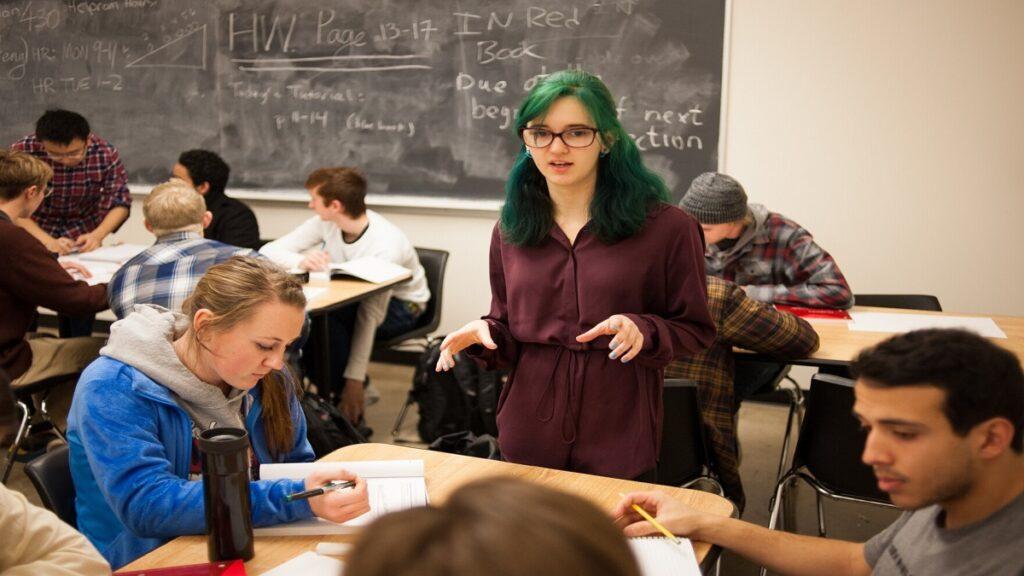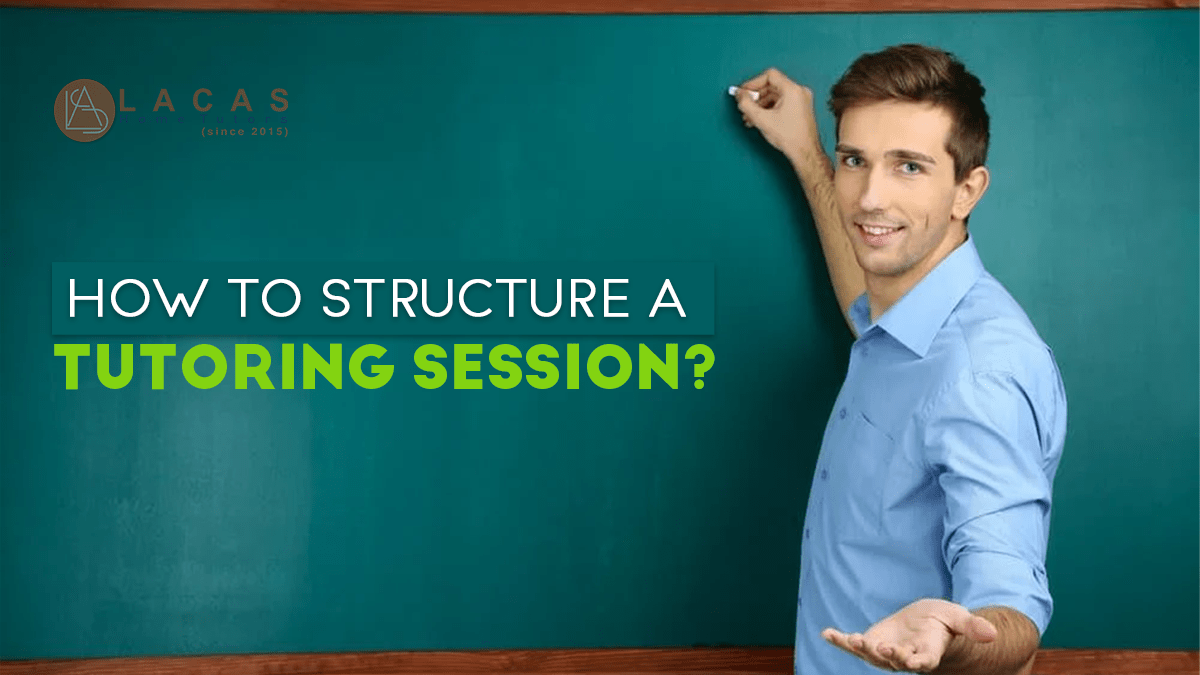Tutoring can be an incredibly effective tool for students looking to improve their academic performance. However, without a clear structure, these sessions can often feel overwhelming and unproductive. Whether you are a student seeking tutoring or a tutor looking to provide the best support for your students, having a structured approach to your sessions is key.
The Importance of Effective Tutoring Session Structure
Effective tutoring session structure is crucial for maximizing the benefits of tutoring services. A well-structured session provides a clear roadmap for both the tutor and the student, ensuring that the time is used efficiently and effectively.
One of the key advantages of a structured tutoring session is that it allows the tutor to assess the student’s needs and tailor their approach accordingly. By understanding the student’s goals and challenges, the tutor can provide targeted support and address specific areas of improvement. This personalized approach fosters a sense of trust and engagement, creating an environment where the student feels comfortable asking questions and seeking guidance.
Additionally, a structured session enables the tutor to set clear learning objectives for each session. By clearly defining what the student should achieve by the end of the session, both the tutor and the student have a shared understanding of what needs to be accomplished. This clarity helps to maintain focus and provides a sense of direction throughout the session.
Moreover, an effective tutoring session structure includes engaging warm-up activities. These activities help to prepare the student for the session by activating prior knowledge and generating interest in the topic at hand. By starting the session on a positive and interactive note, the tutor can capture the student’s attention and create a foundation for effective learning.
Assessing Student Needs: Understanding Goals and Challenges
To provide effective tutoring services, tutors must have a thorough understanding of the student’s goals and challenges. Assessing student needs is an essential step in the tutoring process as it helps tutors tailor their approach and provide targeted support.
To begin the assessment, tutors should have open and honest discussions with their students. This allows them to understand the student’s academic goals, whether it’s improving a specific subject or achieving higher grades overall. By having a clear understanding of these goals, tutors can create a roadmap for the tutoring sessions and set appropriate learning objectives.
In addition to goals, it is equally important to understand the challenges the student is facing. This can include identifying specific topics or concepts that the student finds difficult, as well as any learning difficulties or barriers to their academic progress. By recognizing these challenges, tutors can provide the necessary resources, strategies, and support to help the student overcome them.
Assessing student needs is a collaborative process, where tutors and students work together to identify areas for improvement and establish a plan of action. This approach fosters a sense of trust and allows students to feel heard and understood. Ultimately, by understanding the goals and challenges of the student, tutors can provide the personalized support necessary to help students succeed in their academic journey.
Setting Learning Objectives for the Session
Setting clear and achievable learning objectives is an essential component of a well-structured tutoring session. These objectives serve as guideposts for both the tutor and the student, ensuring that the session is focused and productive.
When setting learning objectives, it is important to consider the specific goals of the tutoring services. Whether the student wants to improve their understanding of a particular subject, strengthen their study skills, or prepare for an upcoming exam, the objectives should align with these goals. By clearly defining what the student should achieve by the end of the session, the tutor can create a sense of purpose and direction.
Additionally, learning objectives should be specific and measurable. Rather than setting vague objectives like “improve math skills,” it is more effective to set objectives such as “solve three algebraic equations independently.” This allows both the tutor and the student to track progress and evaluate the effectiveness of the session.
Furthermore, learning objectives should be achievable within the given time frame. It is important to set realistic expectations and ensure that the objectives are within the student’s reach. This helps to build confidence and motivation, as students can see tangible progress towards their goals.
By setting clear and achievable learning objectives, tutors can maximize the effectiveness of their tutoring sessions and provide targeted support to help students succeed in their academic endeavors.
Engaging Warm-Up Activities for Student Readiness

Engaging in warm-up activities is an essential component of a well-structured tutoring session. These activities serve as a bridge between the student’s previous knowledge and the upcoming session, helping to activate prior knowledge and generate interest in the topic at hand. By starting the session with interactive and engaging warm-up activities, tutors can capture the student’s attention and create a positive learning environment.
One effective warm-up activity is to ask the student to recall information related to the topic of the session. This can be done through a quick quiz, a discussion, or even a game. By challenging the student’s memory and encouraging them to retrieve information they have previously learned, tutors can reinforce their understanding and build confidence.
Another engaging warm-up activity is to present a real-life scenario or problem that relates to the topic of the session. This can spark curiosity and encourage the student to think critically and apply their knowledge in a practical context. Tutors can ask thought-provoking questions, encourage brainstorming, or even engage in a hands-on activity to make the warm-up activity more interactive.
Furthermore, incorporating multimedia resources, such as videos or interactive online tools, can make the warm-up activity more engaging. Tutors can show a short video clip related to the topic or use an interactive online simulation to pique the student’s interest and create a sense of excitement.
Overall, engaging warm-up activities help to prepare the student for the session by activating prior knowledge, generating interest, and creating a positive learning environment. By starting the session on an interactive and engaging note, tutors can set the stage for effective learning and maximize the benefits of the tutoring session.
Also Read: The Most important things a Tutor can do for a student

Introducing and Explaining New Concepts
When it comes to tutoring sessions, introducing and explaining new concepts is a crucial step in helping students understand and apply their knowledge. This part of the session allows the tutor to break down complex ideas into manageable chunks, making it easier for the student to grasp and retain information.
To effectively introduce and explain new concepts, tutors can start by providing a clear and concise overview of the topic at hand. This can include defining key terms, outlining the main ideas, and highlighting the relevance of the concept to the student’s overall learning goals. By setting the stage and providing context, tutors can help students see the bigger picture and understand why the concept is important.
Next, tutors should break down the new concept into smaller, more digestible parts. This can be done through the use of examples, analogies, and visual aids. Tutors should strive to explain the concept in a way that is relatable and easy to understand, using language and terminology that the student is familiar with. This helps to bridge the gap between the student’s existing knowledge and the new concept, making it easier for them to connect the dots and build a solid foundation of understanding.
During the explanation, tutors should also encourage active participation from the student. This can include asking open-ended questions, engaging in discussions, and encouraging the student to share their own thoughts and insights. By actively involving the student in the learning process, tutors can foster critical thinking skills and promote deeper understanding.
In summary, introducing and explaining new concepts is a vital part of a well-structured tutoring session. By providing clear overviews, breaking down complex ideas, and encouraging active participation, tutors can help students grasp new concepts and apply them effectively in their academic pursuits.
Guided Practice and Step-by-Step Assistance
Guided practice and step-by-step assistance are essential components of a well-structured tutoring session. This part of the session allows the tutor to provide hands-on support and guide the student through the learning process. By breaking down complex problems and concepts into manageable steps, tutors can help students build confidence and develop a deeper understanding of the material.
During guided practice, tutors should start by demonstrating the correct approach to solving a problem or understanding a concept. This can be done through examples, visuals, or step-by-step explanations. By showing the students the correct path to follow, tutors can help them understand the logic and reasoning behind the solution.
Once the demonstration is complete, tutors should provide ample opportunities for the student to practice on their own with guidance and support. This can involve asking the student to solve similar problems, providing prompts and cues when necessary, and offering explanations and corrections as needed. By guiding the student through the practice process, tutors can help them develop problem-solving skills, critical thinking abilities, and a deeper understanding of the subject matter.
Additionally, tutors should encourage active engagement from the student during guided practice. This can include asking open-ended questions, encouraging discussions and brainstorming, and prompting the student to explain their thought process. By actively involving the student in the practice process, tutors can foster a deeper level of understanding and help the student take ownership of their learning.
In summary, guided practice and step-by-step assistance are crucial components of a well-structured tutoring session. By demonstrating the correct approach, providing practice opportunities, and encouraging active engagement, tutors can help students develop essential skills and achieve academic success.
Encouraging Independent Practice and Application
Encouraging independent practice and application is a crucial step in a well-structured tutoring session. It allows students to take ownership of their learning and apply the knowledge and skills they have gained during the session.
One effective way to encourage independent practice is by assigning relevant exercises or tasks for the student to complete on their own. These exercises should align with the learning objectives set for the session and provide opportunities for the student to practice and reinforce their understanding. Tutors can also provide resources such as practice worksheets, online quizzes, or interactive activities to facilitate independent practice.
In addition to assigning exercises, tutors should encourage students to seek out additional resources and practice opportunities on their own. This can include recommending textbooks, online resources, or practice books that align with the student’s learning goals. By empowering students to take the initiative in their learning, tutors can foster a sense of independence and a lifelong love of learning.
Moreover, tutors should emphasize the importance of real-world application of the knowledge and skills learned in the tutoring session. This can be done by discussing practical examples, case studies, or real-life scenarios that demonstrate the relevance and applicability of the subject matter. By connecting the material to real-world contexts, tutors can help students see the value and practicality of what they are learning.
Overall, encouraging independent practice and application is a key component of a well-structured tutoring session. By assigning relevant exercises, providing additional resources, and emphasizing real-world application, tutors can empower students to become active learners and apply their knowledge in meaningful ways.
Providing Feedback and Evaluation for Progress
Providing feedback and evaluation is a crucial step in a well-structured tutoring session. It allows tutors to assess the student’s progress and provide guidance for improvement. Feedback provides students with valuable insights into their strengths and areas for growth, helping them build confidence and make adjustments in their learning strategies.
During a tutoring session, tutors should provide timely and constructive feedback that is specific and actionable. This can be done through verbal feedback, written comments, or a combination of both. By highlighting areas of improvement and offering suggestions for further development, tutors can guide students towards a deeper understanding of the subject matter.
In addition to feedback, evaluation is also important to track progress and set new goals. Tutors can use assessments, quizzes, or other measurement tools to evaluate the student’s comprehension and skill mastery. This information can be used to adjust the pace of instruction, focus on specific areas of weakness, or introduce new concepts.
Overall, providing feedback and evaluation fosters a supportive learning environment and helps students stay motivated and engaged. By recognizing their achievements and providing guidance for improvement, tutors can empower students to take ownership of their learning and strive for academic success.











